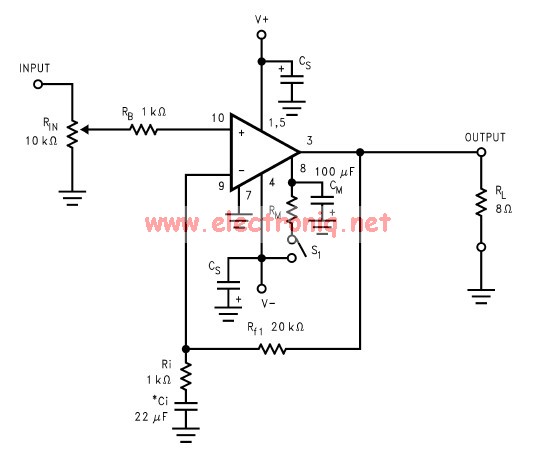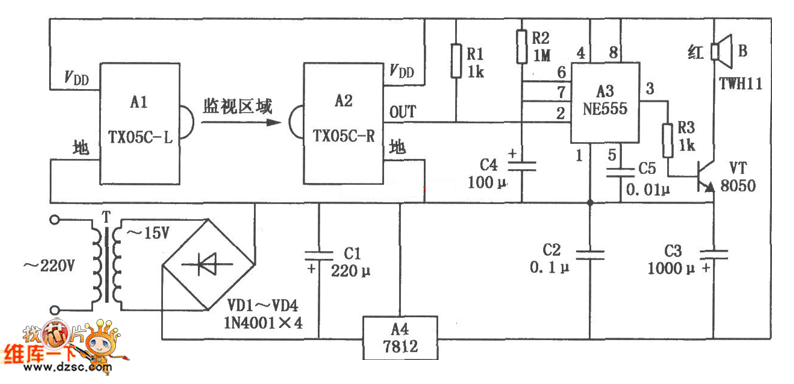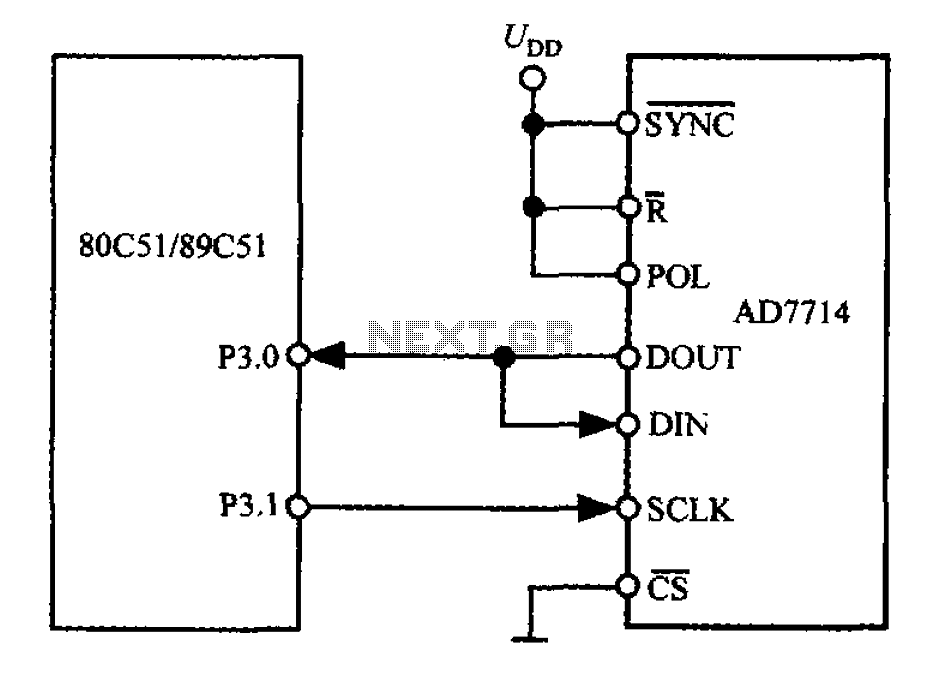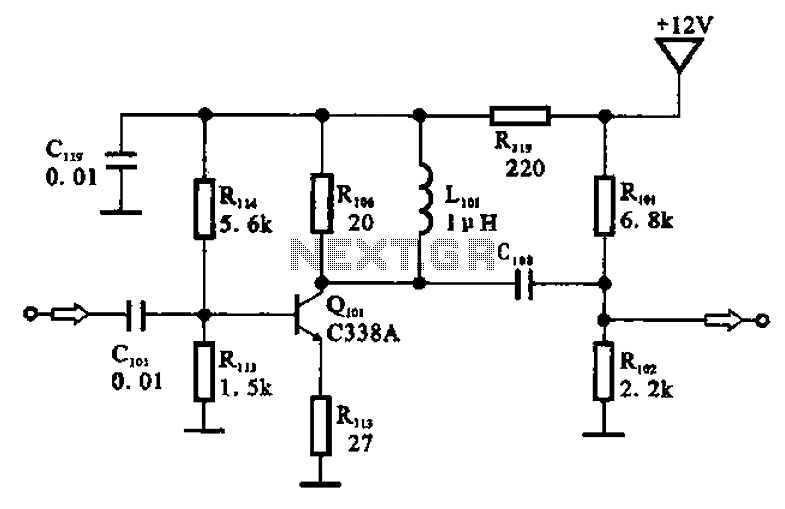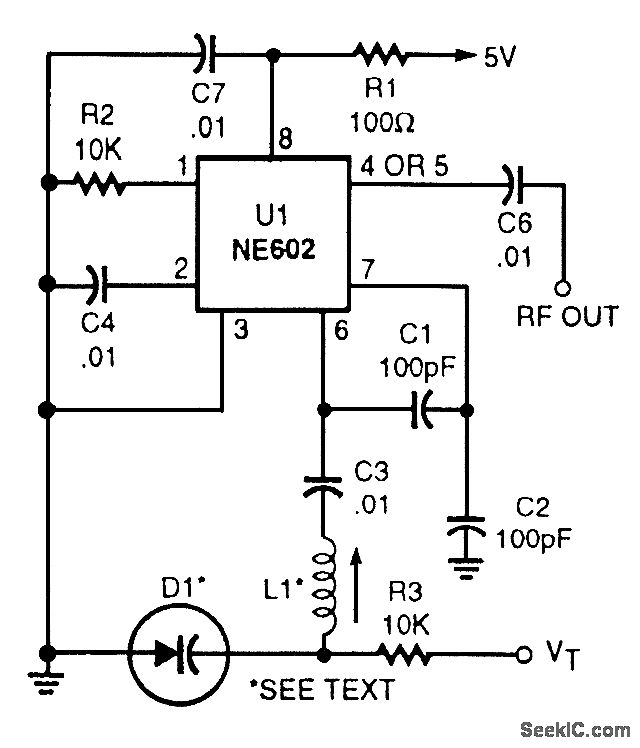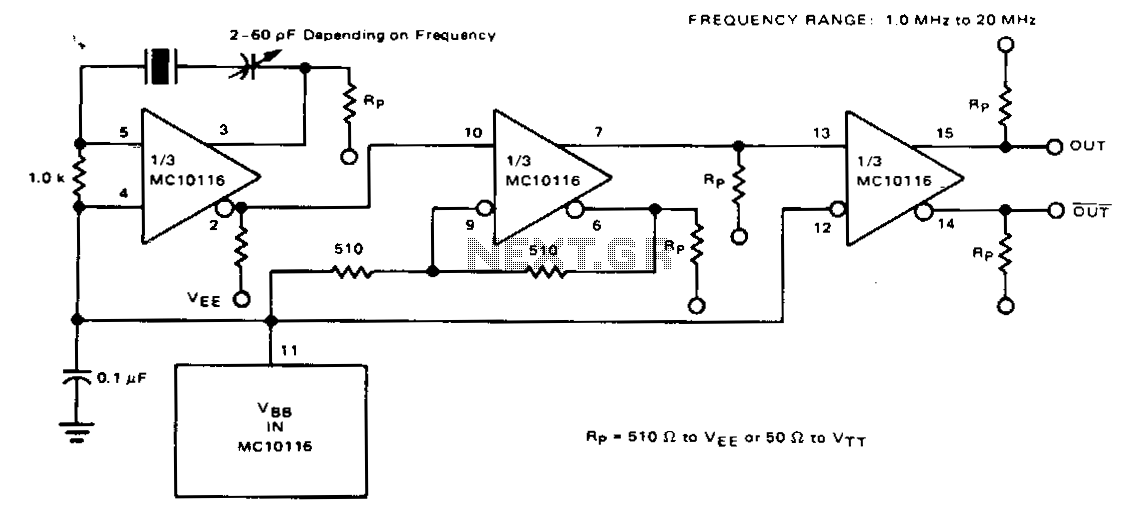
Precision Gated Oscillator Circuit

A 1-kHz gated oscillator with no long turn-on cycle is shown. R2, R3, and D1 preset the voltage on tuning capacitor C1 to a percentage of the supply voltage.
The circuit described functions as a gated oscillator operating at a frequency of 1 kHz. The primary components involved include resistors R2 and R3, diode D1, and tuning capacitor C1.
In this configuration, R2 and R3 are used to create a voltage divider that sets the reference voltage for the tuning capacitor C1. This configuration allows for precise control over the voltage applied to C1, which is crucial for determining the oscillation characteristics of the circuit. The diode D1 serves to prevent reverse current flow, ensuring that the voltage across C1 remains stable and within the desired range.
The oscillator operates without a long turn-on cycle, which implies that it can quickly reach its stable oscillation state upon activation. This characteristic is beneficial for applications requiring rapid response times. The gating mechanism likely involves a control signal that enables or disables the oscillator, allowing for flexibility in its operation.
Overall, this circuit is suitable for applications where a stable, low-frequency oscillation is required, and the ability to adjust the oscillation characteristics through the tuning capacitor is advantageous. The design emphasizes simplicity and efficiency, making it an effective solution for various electronic applications. A 1-kHz gated oscillator with no long turn-on cycle is show. R2, R3, and D1 preset the voltage on tuning capacitor CI to % of the supply voltage. 🔗 External reference
The circuit described functions as a gated oscillator operating at a frequency of 1 kHz. The primary components involved include resistors R2 and R3, diode D1, and tuning capacitor C1.
In this configuration, R2 and R3 are used to create a voltage divider that sets the reference voltage for the tuning capacitor C1. This configuration allows for precise control over the voltage applied to C1, which is crucial for determining the oscillation characteristics of the circuit. The diode D1 serves to prevent reverse current flow, ensuring that the voltage across C1 remains stable and within the desired range.
The oscillator operates without a long turn-on cycle, which implies that it can quickly reach its stable oscillation state upon activation. This characteristic is beneficial for applications requiring rapid response times. The gating mechanism likely involves a control signal that enables or disables the oscillator, allowing for flexibility in its operation.
Overall, this circuit is suitable for applications where a stable, low-frequency oscillation is required, and the ability to adjust the oscillation characteristics through the tuning capacitor is advantageous. The design emphasizes simplicity and efficiency, making it an effective solution for various electronic applications. A 1-kHz gated oscillator with no long turn-on cycle is show. R2, R3, and D1 preset the voltage on tuning capacitor CI to % of the supply voltage. 🔗 External reference
Warning: include(partials/cookie-banner.php): Failed to open stream: Permission denied in /var/www/html/nextgr/view-circuit.php on line 713
Warning: include(): Failed opening 'partials/cookie-banner.php' for inclusion (include_path='.:/usr/share/php') in /var/www/html/nextgr/view-circuit.php on line 713
